10 B Mr. WartenbergBack Dear visitor, here you can read some of our reports of our practical work experience. |
Working in a primary school
by Annika Böckenfeld
A typical working day
I´m doing my practical work placement at a primary school for two weeks. Now I describe a typical day of mine. Primary school starts at 8 am. So I have to be there at about quarter to eight every day. Today I visited the lessons of a third form. The morning began with a German lesson, in which the children had to write a class test. A math lesson followed. Because the German lesson lasted so long, the math lesson was shorter than usual. The pupils compared their results with each other. At the end of the lesson they got homework from the teacher. After the second lesson there was a long break. The pupils stayed in their classroom while they were eating their breakfast. Ten minutes later they were allowed to go out into the schoolyard. All pupils started playing and running, this kept them warm although it was rather cold today. After a while the bell rang and all pupils had to come in. The shoes of the children had become dirty during the break, so the children had to take off their shoes before entering the classroom. Each child has got a pair of slippers at school. The same teacher as before taught the pupils in the third lesson. During this lesson they talked about the four elements: fire, water, earth and air. They listened to some pieces of music. The children had to match the pieces of music to the elements. Then they brainstormed things they associate with fire. The network was worked out in pairwork. The fourth and last lesson was an English lesson, which was taught by a different teacher. At the beginning of the lesson the teacher and the pupils sang a song. They talked about what they like and what they don´t like, because they wanted to practise some new words. The pupils learned the pronunciation and writing of some new words by the help of a rhyme. At the end they also sang a song to say “Goodbye”.
Advantages and disadvantages
There are many advantages and disadvantages in a teacher´s job. Primary schools are often smaller than secondary schools, so pupils and teachers know each other better than in bigger schools. You teach most of your pupils in nearly all subjects. This is the fact why you don´t teach many different pupils. It is much more fun to teach younger people than the older ones. A teacher at primary school also advises pupils in social behaviour. In my opinion this makes the job interesting. On the other hand it strains every nerve if there are pupils who are very uneducated. I see another disadvantage in the fact that you may not be able to study because of the “NC” (numerus clausus). Maybe it will be a problem to find a job as a teacher. As a teacher you don´t only work at school, you also have to work at home, for example preparing lessons and correcting test papers. Regarding all the facts I think this job would be very interesting for me, because I like working with children.
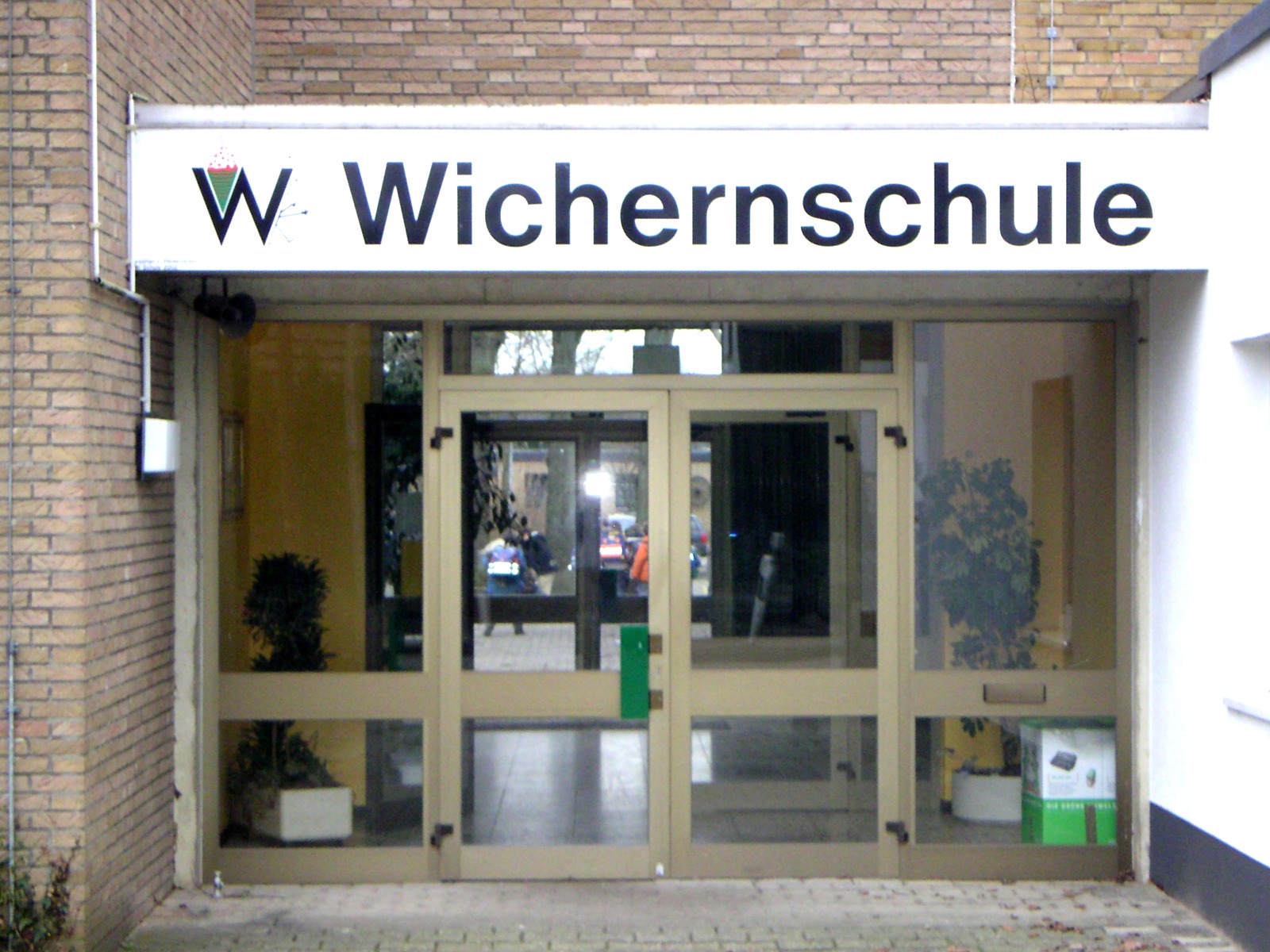
Working at the central police station in Münster
by Elisa Mellies
A typical working day
My practical training was at the central police station in Münster. Every day I did different things and the third day was the best. I was in a police district in Münster. I had to begin at 6 am , very early in the morning. I was allowed to go on patrol with two police officers. We cruised around in a patrol car and that was already interesting. First we observed a way to school and if the pupils had the lights on riding their bicycles. After that we went on patrol and observed the traffic at a set of traffic lights. But all the people who drove a car drove correctly. Then we got into action. There was a shoplifting incident at a shop. We drove to the shop and we had to check the personal data of the shoplifters. Then we had to wait for their mothers, because they had to pick up them. One of the shoplifters said nothing and the other one was very cheeky. Then we went back to the police district. There was a police officer who had got a new weapon. He showed me how it works and which cartridges belong to the weapon. That was very interesting. Afterwards we took a police officer to another station, because he had to train with the new weapon. So I could take a look at the room, in which they shoot. After that there was a new action: an accident with a little material damage. The police officers had to write an accident report for the insurance. Then I finished work. This day was very exciting.
Advantages and disadvantages
There are some advantages and disadvantages in the job of a police officer. A big advantage is that you can`t be fired. Unless you commit a crime which is sanctioned by a minimum sentence of one year imprisonment. Another advantage is that you work to help people. I think that`s a great feeling. But there are also some disadvantages. The first is that you have to work in shifts. There is the morning shift , the evening shift and the night shift. And it`s possible that a police officer is in a dangerous situation , like an amok run or something. The biggest disadvantage is that when you finish your training at the police you have to work where a police officer is necessary. So it`s possible that you have to go to Cologne , Bonn , or Münster. You may have to leave your friends and family. All in all I think there are too many disadvantages in this job for me to work as a police officer.
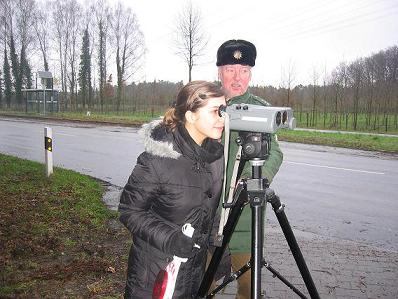
Working in the university library for Social Sciences
by Cornelius Kronlage
A typical working day
During my practical work placement in the university library for Social Sciences in Münster my daily working hours ranged from 9 am to 4 pm so I had to stand up at about 7 o’clock to be able to get onto the right bus that departed in Nordwalde. When I arrived in Münster, I went to the library and first looked for the head of department to ask what I’d do that day. Usually I spent the morning in one of the administration departments and worked at the issue counter or in one of the stack-rooms in the afternoon. So I would be left in the hands of one of the employees doing, for example, the cataloguing, who explained the basic principles to me first, for example the regulation of the obligatory copies, i.e. one copy of each book published in Germany must be given to the responsible library. After I had gained an overview of the tasks I was introduced to the concrete procedures, for example finding the right book in the giant database or adding new information, and sometimes I was even allowed to do some work on my own. Then I broke off for lunch in the university canteen before I took up my work in the issue. There I did multiple tasks, first I was only occupied with shelving books that had been borrowed or with searching books that had been misplaced, but later, after I had been shown the computer system, I was also able to work at the issue desk. Those tasks soon got a little boring but whenever there was some spare time one of the employees explained something new to me, so over time I learned everything about the inter-library loans or the library’s journal subscriptions. At 4 o’clock I departed from the library and took the bus to Nordwalde again.
Advantages and disadvantages
There are different kinds of jobs with different qualifications that you can do in a library. For some you only need to do an apprenticeship and for others you have to study. I think that the work you do after the apprenticeship is not really so interesting because everything you do is shelving books, serving customers or just doing some computer work. But if you have studied you can do more interesting and varying work like deciding what books to buy or not, what exact category they belong in, basically you’re responsible for the library to fulfil its task, which is providing the right information for the customers. That’s why I would only take the second possibility, though I don’t really think that this occupation really does come into question for a future career for me as I have other fields of interests that I would first try to get a job in.
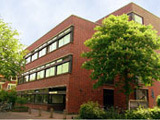
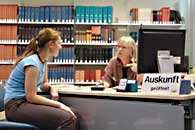
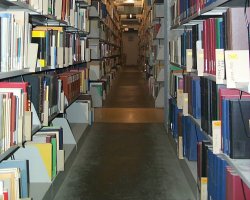
Working in a dental surgery
by Niklas Scheipers
A typical working day
In Dr. Lensing’s dental surgery, I had to work four hours every day between 8:00 am and 12:00 o’clock. After I put on my work clothes, which had to be completely white, I went to the kitchen where the doctor’s three assistants Kerstin, Anja and Jessica made their coffee every morning and discussed some patients who came on this day. The doctor normally arrived at 8:15 am, welcomed us nicely, went to his workroom and prepared for the patients on that day. As a general rule the first patients came at about 8:00 am and stayed in the waiting-room until their fixed date. When the doctor and also his assistants were ready, they brought the first patient into the surgery, where they discussed his complaints. After that, me and either Jessica or Anja made the room ready. After the therapy I cleaned the surgery with one of the assistants, so that the next patient was able to enter the room. As it was a rather small doctor’s office there wasn’t always a lot going on, so in the meantime, I sometimes had a small break where I was allowed, to have a look at the appointment-book of the office, to eat a little bit or to talk with the assistants. The doctor normally cured three patients half hour, who were usually old age pensioners with choppers problems or similar things. At about 10:30 pm I had my lunch break. Every day we had at least one radiography of the patient’s teeth, which I was allowed to develop in a special, darkened room. The apparatus turned around the patient, who bit on this white piece of plastic in the middle of this picture and so we got a picture of his set of teeth.
Advantages and disadvantages
A big advantage when you work as a dental surgeon is that you meet lots of different people, which I really enjoyed in my two-week practical course. But you always sit in your small doctor’s office and can’t really enjoy the nice weather in summer time for example. Other occupations like technical ones you do outside are often very hard so it’s also an advantage to work in a doctor’s office. However, the requirements for becoming a doctor are very high, so it’s very difficult to get this job. I really enjoyed these two weeks and I also really like this occupation, so this is my dream job when I’m grown-up. The last student apprentice in this doctor’s office said that he didn’t like this job, but I think it’s a very interesting one and I’m looking forward to doing this job.
Working in a hotel in Münster
by Julia Voigt
A typical working day
During our practical work placement I worked in a hotel in Münster. It´s called “Hotel Kaiserhof”. A typical working day started at 7 o´clock. That´s why I got up already at 5 o´clock. I went to Münster by train. In the first week I worked in the service, where I had to wear black trousers and a white blouse. Furthermore I got an apron from the hotel. As from half past seven the breakfast buffet was open. Now it was my task to bring coffee to the guests, some co-waitresses helped me, because serving the guests is a job for skilled workers, too. While the guests were having their breakfast, I had to fill the buffet again. When guests left I had to bring the dirty dishes into the kitchen and lay the table for new guests. When all guests had finished their breakfast I vacuumed the breakfast room and laid the tables for lunch. For this purpose I folded table-napkins. Then there were still some little tasks like polishing knives, forks and spoons and glasses. At about half past twelve I had a break for half an hour, which I spent with other pupils who did a practical work placement. I was on good terms with them. A further task was that I had to look after the conference rooms and provide them with glasses and drinks. In addition, I built up tables with coffee and cookies in front of the rooms. This was for breaks during the conference. When a guest ordered something special like a cappuccino I had to bring it. This was a typical working day in my first week. In my seceond week my place of employment was the kitchen. My main task was to fill and clear out the dishwasher. But there were also some little tasks which I had to do, for example cutting vegetables, making scrambled eggs, removing freshly delivered goods, cutting butter, making salads and cleaning cupboards. On top of that I helped to clear away the buffet at about half past eleven. Finally, at half past three, I was allowed to go home. My work in the hotel showed me that this job requires hard work and good health. Nevertheless I really enjoyed my practical work placement in the hotel.
Advantages and disadvantages
The job has some advantages, but also disadvantages. You have to do loads of work, but you only get little money. Furthermore, the working hours are very irregular and you have to do a lot of overtime. Another huge disadvantage is that you have to work at the weekend. Thus it is an exhausting job, but it could also be fun. For example, you are in contact with a lot of people, there are even foreign guests. The job is pretty variable and after the schooling you can work in any city in any country. Talking about advantages, there is no work at home. So all in all I would say that I do not want to do that job in my future. It would be fun, but since I would like to have a family, the work at the weekends and the irregular working hours are too much of a disadvantage.
Working in a building company
by Harald Termathe
A typical working day
I don't think that there has been a typical working day during those two weeks of my practical work placement. The tasks that were given to me were always different. There were only few activities I had to do more than twice. But I will try to describe the routine in that enterprise as I think it is. I would surely be able to describe it better if I had spent more time in the enterprise. I spent my practical work placement in a building company, more precisely with an architect who was actually employed as a construction supervisor. The company employs four architects, a technical drawer, a carpenter, two tilers and some hard hat workers. The architects start their work at 8 o'clock and I did so, too. As the company is not far from home, I usually went to work by bike. In the mornings I often went to a site with one of the employees. That was always very in-teresting as I could always see and do different things. Once we levelled a new site, once we took photos of the environment, once we measured buildings etc., etc. The only thing I had to do nearly every day was to cut and to fold statical plans so that they had the size of a DIN A 4 paper. Moreover I had to calculate the mass of bricks and pantiles that would be needed for a building, or the living space of a building, I had to write letters and phone subcontractors to make them finish their work in time, I had to check invoices and all stuff like that. The employees had a half-an-hour lunch break at 1 pm. But as my working time had been set from 8 am to 2 pm I left the break out and finished my work half an hour earlier at 1.30 pm.
Advantages and disadvantages
I think that the job of an architect is very interesting and varied. Nevertheless it is not the job I prefer for my future career because the building industry is a very busy business and there is a lot of pressure and stress. That does not mean that I want a job without any pressure and stress. I think that those jobs are usually very boring. Anyway, I think that it would be a good alternative job. Maybe it is as well less busy if you don't work in a building company but as a self-employed architect. I also like the job because you assume a lot of responsibility, especially if you also act as a construction supervisor. Although I do not like the job so much I think that the practical work placement is a very good thing and that it was very helpful with regard to choosing a job for the future career.
Working in a primary school
by Leonie Bohn
A typical working day
It´s Monday morning at 7.30 when I go to the bus stop with my little sister and her friends and wait for the bus. I sit next to my sister and the bus takes us to the primary school in Laer. After leaving the bus we go to the schoolyard. We usually wait for half an hour for the bell which shows us that we are allowed to go into the schoolbuilding. I go upstairs to the classroom of Form 1a where I have been doing my period of practical training for one week. In the first lesson each child tells the others about the weekend. In the second lesson the children have language instruction. After getting to know a new letter, they learn how to write it. After these two lessons there is a break for thirty minutes where the children play in the school yard and have eat their breakfast. In the third lesson we go together into the gym where we play games with a ball. Suddenly I heard a loud scream behind me: ”Alex has been kicked a ball against his nose!” Turning around I see that blood is coming out of his nose. Miss Hammelmann, the form teacher, quickly runs to the toilet room where she tries to stop the bleeding. All the children are shocked by this little accident, but the game goes on. After the exciting sports lesson, we go back into the classroom. Every child has calmed down so that we can start with the fourth lesson, which is Art. All the children take out their paint-boxes and begin to paint a picture with water colours. They have to paint thin, coloured stripes. It is a big chaos because some children make a terrible mess on their tables. They slop water or paint on the tables. It is difficult to control them, but they clean everything before the lesson ends. When the bell rings again and all the children go home, my working day is over, too and I go home by schoolbus.
Advantages and disadvantages
Before the beginning of my period of practical training I had certain expectations. I hoped that I would be accepted by the children and would get along well with them. I thought I would enjoy the time with them and I would find out if I were suited to this work. After finishing this period, I realized that that was exactly what I had had in mind because the children were so nice and cute. I got a lot of pictures which had been painted by these children. I think these are advantages in ´my job´ and I could imagine doing something like this in my future because I get along well with these children. But I couldn´t imagine how stressful this job can be and didn´t know that having patience with the children is the most important ability a teacher has to have. But I don´t really care about these disadvantages because I like working with children and I think it could be the right job for me.
Working in a workshop
by Anna-Lena Nicolaus
A typical working day
As every morning I started working at 8.30 h. I finished the salver (Tablett) which I had started to manufacture yesterday and I was highly pleased, because it was very difficult to manufacture the corners. I had to prick out (ausstechen) tines which meshed (ineinander greifen) so that the corners were not unstable:
First I had to draw the tines at the wooden boards, afterwards I had to prick out every second tine very carefully and finally I had to nest (ineinander stecken) the tines and I looked whether the corners weren’t too lax (locker).
At nine o’clock I took a break for breakfast. After that I was allowed to choose a model for the two longer sides of the square (rechteckig) salver- I chose a wavy pattern. After drawing the wavy pattern at the salver I sawed (sägen) along my drawing with a fret saw (Stichsäge). Furthermore I sawed out two holes at the two shorter sides of the salver so that you could carry it. By the time it was twelve o’clock and I drove home for lunch. I had to start working again after one hour. At one o’clock I continued working at the salver. Now I had to abrade (schleifen) the salver – first gruffly (grob) with 80- abrasive paper (Schleifpapier) and afterwards finely (fein) with 150- abrasive paper. Hereon I assembled the salver from the different pieces (zusammenbauen) and I glued all together. Now it had to dry. Not until it was dry could I start to abrade the salver again but only till 16.30 h because then I knocked off work (Feierabend machen).
Advantages and disadvantages
In my opinion the job of a “joiner” (Schreiner) has two main advantages. The first advantage is that you work with your hands and the second advantage is that you can work with wood. But what I also appreciated was that you can see what you have created with your hands. Of course this job has got disadvantages, too, mainly for women because women have a scant chance (geringe Chance) if they want to start their own business. To work as a joiner means very hard manual work and the majority of people think that a handicraft (handwerklicher Beruf) is only a job for strong forceful men, not for women. If you want to become a joiner you have to do training, but after this, you should continue your training, for example in order to become an interior designer (Innenarchitekt). Another less important disadvantage is that a joiner not only works inside but also outside, for instance to install a window because of bad weather conditions. As may be imagined, these aren’t the best conditions for women but I like this job and I can imagine to become a joiner in my future, because I like jobs where I can manufacture something with my hands and where I can see what I have created. A job in an office where I sit in front of a computer every day would be nothing to me. My dream job after training as joiner is to become an interior designer.
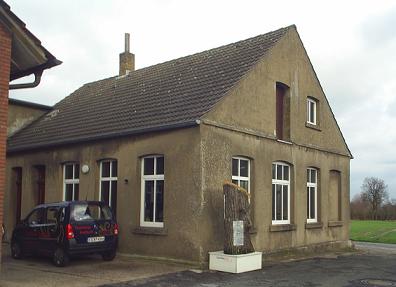
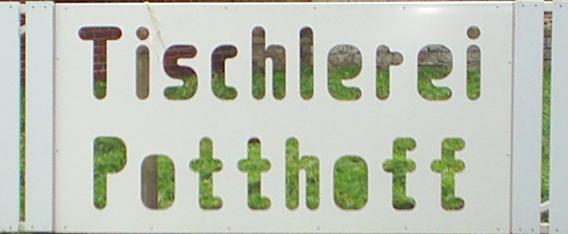
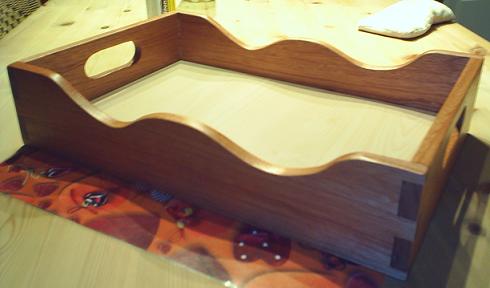
Working in a veterinary practice
by Julia Große-Kleimann
A typical working day
Every day at about nine o’clock in these two weeks, I took my bike and rode about a half kilometre to my working place, the veterinary practice of Dr. Tanja Große Lefert. The consulation hours are mornings from nine o´clock to eleven o´clock. During this time any person can come with his or her ill pets. But most people have to work at this time, so there aren´t so many clients. To avoid doing nothing, the medical secretary and me, watered the flowers, dusted the cupboards, cleaned the windows or did other little jobs like that. After the consultation-hour, the veterinary normally performs operations, for example a castration. At half past twelve a.m., I was allowed to go home for lunch till four o´clock. In the afternoon I always watched the treatment of animals. Sometimes, they came only for a routine examination or for inoculation. But mostly they had some really bad problems like a broken leg, an inflammation of the conjunctiva or something different. Either the doctor could treat the injury directly, by injecting pharmaceuticals or bandaging the wound. But if the injury was too severe, the animals had to stay at the station. The station is a little room with four square cages, in which pets can stay and sleep till they´re strong enough to return to their owners. When there was such a case, I had to bring the invalids to their new home. I put some food and drink into their cage and cared for them. Last but not least we had to wipe the floor, tidy up the surgeries, put the rubbish out and check the cash box. After having finished all these things, it was always about seven o´clock. This job was very arduous, but also very interesting and amusing.
Advantages and disadvantages
I think, I can profit a lot from this job, especially because I am a person who loves pets. For this sort of people it´s the right job, because they deal with their favourite activities most of the time. And the most important advantage is the fact that you help ill animals and their owners. But to become a veterinarian, you have to study for five and a half years. That´s very long and you must determine – before starting – if you´re strong enough to go about it. For example if you can´t stand seeing blood, this job isn´t the right one for you. But I think I will study veterinary medicine, because I love animals and after having finished my practical work placement, I have learned very much about this encouraging job and its advantages and disadvantages. As a result I can say that I want to become a veterinary surgeon.
Working in a fashion shop
by Mona Bettermann
A typical working day
On a typical workday I drove to Ochtrup with an employee at 7.30 and she took me to the railway station there. Then I went to the fashion shop bianca Moden by bicycle. At 8.15 my working day started. The first thing I did every morning was to switch on the computer and then a designer logged me in with her name and code. Then I did many different things. I had to make lists of the different materials, scan sketches for different clothes, scan different patterns, create accessory pages and correct sketches. Into the summaries I had to put in which material-number this material has, who the supplier is, how much this material costs, which fabrics this material has (cotton, etc.) and how many per cent of every fabric, which colour this material should be in and which special qualities it has. After that I had to put the scanned sketches into the right summary and must write down the details of these (modelnumber, length, price, colour). Sometimes the sketches were not correct and then I had to change them. Into the accessory pages which I made I had to put in some details of different clothes (which buttons and zippers should be used and so on). In the afternoon I took part in talks about the latest fashion. I had lunch time from 12.15 to 1.00 and I finished work at 4.30. Then I rode my bicycle back to the railway station, put my bicycle into the bicycle station and took the next train home. At 5.20 I was in Nordwalde and then I was taken home by car.
Advantages and disadvantages
There are advantages as well as disadvantages in ‘my’ job but this is normal. As a designer you often go abroad, get to know many people and you can go on fashion fairs etc. Well, you have many dates and sometimes it can be very stressful, for example before a handing-over of the latest fashion collection and you have to work longer. But this is not so bad because you enjoy drawing clothes etc. Well, you have to draw clothes which the customers like but you must organize many things on your own and this is the reason why you can draw what you like, too. This shows that I have many positive impressions of this job and this is the reason why I can imagine doing something like this in the future.
Working in a physiotherapy
by Nadine Voges
A typical working day
In my job there isn´t a typical working day. Every day is a special one, because there are always different people to do sports or to swim.Because of this fact I choose one day, which I want to write about – the last day: My working day started at half past seven in the morning like every day in the job in physiotherapy. After changing my clothes ( I had to wear white trousers and a white shirt) I talked with one of the therapists (Therapeuten) about the difference between medical gymnastics ( Krankengymnastik ) and physiotherapy. Now I know that these are only two different names for the same job. Then I kept an eye on the “Aqua-Fitness”, where a lot of different people do sports in the water to train their whole body. Third I watched the medical gymnastics. A man had hurt a tendon (Sehne) in his shoulder and had to train the movement of his arm now. It was really interesting to see, which moves support the cure (Heilung) of this injury (Verletzung). Very interesting was also my next activity on this day. I seconded (helfen) two therapists to vet a man who had had a meningitis (Gehirnhautentzündung) when he was three years old and can´t do anything without any help today. He also can´t speak or move his body. We supported him to sit in his bed and massaged his back.. Because of this treatment (Behandlung) he could breathe more easily. My last work on my last day was really cool, because I was allowed to treat (behandeln) a person who had had an accident and had a broken leg on my own. I was supposed to do a bit of gymnastics in his bed to support the blood supply of his legs and feet. Some minutes later a therapist came and did some other exercises with him. To put it in a nutshell I can say that my whole practical training was very interesting and informative.
Advantages and disadvantages
In the two weeks of practical training I learned a lot about the job of a physiotherapist. For example that the education lasts (dauert) three years and is very expensive, because there are mostly private schools. In my opinion this is a very big disadvantage. Another one is the bad prospect (Aussicht) of finding a vacancy in this job. It´s difficult to get one, because of the health service reform (Gesundheitsreform). This says that the doctors can´t prescribe (verschreiben) many medical gymnastics, because the health insurance funds (Krankenkassen) do not get much money for this. These were the disadvantages of the pysiotherapy. Now I want to write about the advantages. The job of the medical gymnasts is very varied (abwechslungsreich), because you work with a lot of different people who need your help. I really like to do something good for ill persons and to support their cure. Another advantage is that you can see the positive effect of your hard work.
Working at St. Elisabeth-Schule
by Jana Böyng
A typical working day
A typical working day of mine at St. Elisabeth-Schule begins at 8 o´clock. The first thing I have to do is to put the chairs in a circle. The school buses and taxies with the pupils arrive at 8.30 am. Some of them can´t go to the class alone so we have to wait in front of the school to fetch them from the buses and take them to the class. Then we sit down on the chairs. The kids have to find out the date and then they have to figure out the timetable for the day. After these things the lessons start. They do maths, speak, and read. At 10 o´clock we have breakfast. The children bring their bread and an apple from home to school and we all eat together. At 12.30 we have lunch. The food is cooked in school by older pupils and cooks. Before we start to eat we take each other by our hands and pray. After lunch I have a break for 30 minutes. In this break I am allowed to leave the school area. Now the kids have got a play-break for 45 minutes. One child is allowed to play at the computer. On the computer are learn-games for the ones who can learn more easily and more than the others can. After play-break the lesson continues. The pupils are split up into 3 groups and learn on their level.In maths, for example, the first group learns numbers from one to ten and does little exercises. The second group learns numbers from one to six and the third group learns just about forms and colours. If the weather is good we go outside and play on the big school-playground. At the end we sit down in a circle again. At 3 pm we sing a song and then we have to take the children to their busesand taxies. At 3.30 pm I go to the busstop and at 4 pm I go home by bus.
Advantages and disadvantages
I loved my work at St. Elisabeth-Schule. The kids were so sweet and they trusted in me from the first moment on. I learned a lot about these kids who can´t do anything alone. This job showed me how it feels to help these kids. It´s a great experience to know that you helped them to live. The longer I worked there the more I knew better that I would do this job in my future life. I like to work with those kids and I like to help people. These two things are combined in this job and are a good condition for a job with the mentally retarded.
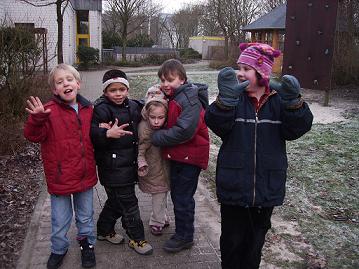
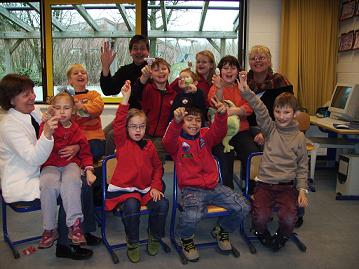
Working in an advertisement agency
by Matthias Brinkert
A typical working day
In the last two weeks I worked in an advertisement agency in Borghorst. A typical working day started at 2 o’clock and ended at 5 o’clock. It seems a bit short but you can do a lot of things in this time. But except for those 3 hours my work already started at home. I had to collect ideas on how I could put my exercises into practise in the best possible way. So when I arrived at the agency I already knew what I had to do. Of course my working place was at a modern computer because today these kinds of agencies hardly draw things manually. So first I turned on the computer if it had not been turned on already. I started one of the three main programs I worked with. It’s not so difficult to cope with a program like “Photoshop” or “InDesign” although they’ve got a really long instruction manual. One day I was supposed to create a logo for an office which has got something to do with accounting an which gives advice on taxes. They wanted to have the first letters of their names and a “P” standing for “Partners” in their new logo, so that it looked smarter than the whole name of the office. I worked about one hour before I could present four different blueprints to the head of the agency. He checked the results and told what was made well and what I could improve. This order took a lot of time, because either I or the boss weren’t satisfied with the results. But finally we came to an agreement an I saved the file on the computer’s memory. After this, there was too little time to start with a new job. But I had just some time for grappling with some of the other programs on the computer to get to know them better. There was also a very complicated 3-D program which interests me a lot with its thousands of functions. But I think even if I had only worked with this program during the two weeks, I wouldn’t have understood it. And at 5 o’clock I said goodbye to everyone of the staff and went home.
Advantages and disadvantages
In this job you nearly always work at the computer so that it seems to be an easy job without any efforts, but it isn’t. You have to concentrate so much that you really can become sweaty. And if there’s a big heap of work you haven’t got much time to take a rest. But I think this occupation is only the right one for those who are interested in computers and programs, because without this you may lose fun at your working place. Of course you should bring a touch of creativity with you because this is one of most important factors in this employment. Whether I will do this profession in my further life depends on several different things. At the moment I’m not quite sure if I want to work just in front of a computer. I think a job with more changes and more exercises would be more satisfactory to me. Besides, I would like to study “BWL” after school but I think it will be too expensive for me to realize it with all these tuition fees. So this occupation would be an opportunity for me if I couldn’t realize my expectations.
Working in an advertising agency
by Pascal Krabbe
A typical working day
First of all, there is no „typical“ working day. Every day you have to do different tasks. My working day starts at 2 o'clock. Matthias and me enter the advertising agency. We are welcomed by the staff. I turn on the computer and start Photoshop, a program to modify images. I have to design a new logo for an accountant-agency. I have to design many logos until I'm satisfied, but my director thinks different. He says that I have many good ideas, but none of my creations really fits. He tells me, what the client wishes his logo to look like and I have to start again. After half an hour I'm finished with this task. Because there is no new task at the moment, I go on to create my folder in which I report about my practical work. Here in this advertising-agency I can use various professional design-tools. Although I have known some of them, there are a few new programs. I'm working on an Apple Macintosh. These computers run quite more robustly than Microsoft computers. I have been thinking about the next page, when I get a new task. I have to model a 3D-object. The only thing I can use as a plan is a photo. I have to improvise a lot, but finally it looks quite good. The next thing I have to do is to animate the model. But my working time is over.
Advantages and disadvantages:
I think I can use my knowledge of the programs I've got in my job. I also saw how advertising-projects are planned and how they are realized. My working time was just three hours long, which was one of my disadvantages. It was also nice to imagine how it would be to earn money for something I do as a hobby now. Another new experience was to see how a manager works. It is a very stressful job, I think. You also have to cope with many figures and dates. I saw endless lists with names, prices, dates and sizes. Now I know what education I have to do to get one job. The work experience helped me a lot to understand how to work.
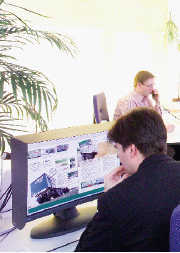
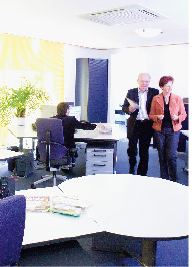
Working in a firm for healthy eating- habits
by Lena Rochol
A typical working day
In my practical work placement I was in a firm for healthy eating- habits in Krefeld. My uncle works there as a public relation manager. He lives in Düsseldorf, which is circa 20 kilometres away from Krefeld, and I lived at his house for the two weeks. In the morning we left his house very early to drive to the firm, mostly this was at 6. 30 am. We started early because then we were able to go home in the afternoon earlier, too, mostly at 4 o´clock, to spend some time with my aunt and my two cousins. It was an unusual, strenuous working day for me, but I could handle this better after a few days. The employers in the firm are employed to inform people about healthy food. Their special target group are kids. When kids learn a lot about healthy and unhealthy food, for example in school, they are informed better and able to live healthy when they become adults, too. The staff make regular visits in different schools, and they always take a lot of material with them: brochures with information (for older pupils or teachers), short movies produced by other pupils, comics, colouring books, pencils, small soft toys, stickers and so on. So the employers do a lot to give kids knowledge playfully and understandably. On this typical working day, I had a lot to do. In the morning, after we arrived, I read some brochures about the history and development of the firm to get informed better. One hour later, Susanne, a dietition, took me to a lecture 35 km away. It was about “dangerous” fat in food. 65 people were present and I took some photos and wrote a notice about the lecture. This notice was published in a letter every employer of the firm got on the next day to be informed about the latest happenings. When we came back to the firm, I worked on the computer on my own task for the two weeks: designing a quiz for kids about milk. I thought up some funny questions, added coloured, nice pictures and printed the quiz. Making this quiz took more than five hours, and I will add it to my practical time folder to show my result to the teachers.
Advantages and disadvantages
In my practical work placement I discerned just a few disadvantages, but many more advantages. I really liked the employers, they were friendly all the time and answered my questions. In the two weeks, I collected a lot of information material that was very helpful to me. I am pleased that I had the chance to see the work in all different working areas, for example in the office or in a school. I must say that I had a lot to do. That could be a disadvantage, too, but I think there are worse things like boredom. I spent much time on my own task, the quiz for kids. It was funny to design it and I learned a lot about the computer program. In my opinion, the only disadvantage was my long working day. But all in all, that was not really bad, because I learned a lot in the two weeks and had a good practical work placement.
Working at the architect’s office
by Jonas Pugge
A typical working day
The 16th of January 2007 was my second internship day at the architect’s office “Nowak und Köllner GmbH”. At 8: 30 I was welcomed by Mrs. Töns. After this I walked to my desk, where I had to design various views (Ansichten), patterns and a ground plan of a detached family house with a garage. I had to design these first layouts with a pencil to test my abilities. Then, at half past 10, after I finished designing my layouts, I had breakfast, which was used for speaking about the daily routine and for thinking about the activities I had to do with the 3 employees. We finished breakfast and I received the order to stick a new lamination (Schicht) parchment paper (Pergamentpapier) onto the old one to transfer (übertragen) the layouts with ink-pens. I did the things I had been told, but before I had been told where to use which pen-sizes among the ink-pens. In between Mrs. Töns explained how to fold and to cut construction plans. For this purpose I got a construction plan and I went to the cellar with Mrs. Töns where the slicer is. At 1: 30 am lunch break began and I went home for lunch. Lunch break finished at 2 o clock. At this time Mrs. Töns explained me how to use a new machine, which was called “Radiograph”. This gadget is about 16 years old and was used for superscribing e.g. the length of a window on a construction plan. I had to clamp (einspannen) an ink-pen and to start the gadget. It was easy to use, because it worked like a gadget and I think that this machine was really interesting, because I saw how the architects had to work in former times. I was allowed to go home at 3: 30 pm and my working day was finished with this.
Advantages and disadvantages
On my internship I worked days as an architect at the “Architektenbüro Nowak & Köllner GmbH”. As I see it there are many advantages, but also some disadvantages. The first positive aspect I want to point out is the fact that you do main parts of your work inside and, because of this, you are not exposed to the weather. Secondly, you have to be constructive and you get a lot of experience with people, because you have to invent new constructions for these people and you are their planner and advisor. There are, however, some disadvantages. There are only few vacancies and, because of this, it is now very difficult for architects to find work and it is not easy to start one’s own business. As I see it, the job of an architect may be something for me, because I like working with the computer and I think this job is very interesting, because you can produce new ideas. On the other side it is really difficult to get a job, because there are so many architects, but only some vacancies.
Working in the laboratory
by Philipp Runde
A typical working day
I start my normal workday at 6.30 with getting up and then getting ready for work. At 7.30 I am at my employment. The first thing to do there is going into a lounge for talking about the next things to do. After this, I go with my colleague Bernd into the seeping water purification plant and take samples of the different cleaning stages. In the laboratory we examine these samples concerning their nitrate and ammonium traces. On the basis of these data the further process of the working day is decided. When we have noted the data we go into the lounge for breakfast. At 10.00 o'clock we go back to our work. The next thing we do is going into the laboratory again to check a few samples we took in the Biology department. After this, we need to check the machines and if necessary the quantity of the water, which is to be cleaned here, needs to be regulated. Now we control the water which is delivered by another rubbish dump, in order to make it clean here. When we are ready with this we go back to the laboratory to do the evaluation of samples we took last week. These samples are important, in case someone from a controlling institution wants to check them. Afterwards we go to clean the filters of the pumps. Now I go to the CHP (Confined Heat and Power Station) because this is being examined at the moment. This is a machine which ensures the utilization of methane gas. Afterwards we turn to the Biology department, in order to calibrate some probes (Sodden) (CO2 and redox). They must, however, be washed only, which we do now. Our next goal is the lounge, because here we have lunch now (12.30-13.00 o'clock). After the meal we calibrate the probes, which we have already prepared. Now we are on the way to Biology where we also check the pH value and the temperature. The next thing I am going to do is driving to Altenberge, where we collect corks to send them to a factory in the Black Forest which recycles them. When we are back at the dumpsite Michael brings me back to the bus station where I take the bus home, at 15.32. This has been my normal workday.
Advantages and disadvantages
The practical course was very interesting, actually. I did all possible things from laboratory work over gas- and water- measurement up to handicraft work. And the good thing was: it was even fun. A very good experience which I made is that work can even be fun and that getting up in the morning is not so different any longer, if you look forward to your work. I also arrived at another conclusion: the life of a pupil is already very pleasant, compared with the one of an employee that has up to 8 hours on a work day.
Working as a photographer
by Lukas Woltering
A typical working day
A typical work scheme for photographers is to take photos for applications. At first the photographer checks which colours the customer’s clothes have because he has to choose the background, which means that, if the customer is dark-coloured he chooses a bright background and if the customer is bright-coloured he selects a darker background to form a contrast on the photo. The second step is to clarify what kind of work the client applies for because there are several devices o develop a photo in a particular style or mode. A person who searches for a job in a kindergarden or a similar socail occupation needs to smile and to make a likable appearance. An employment in a traditional and conservative firm requires a classical photo. The most interesting and most demanding applicants for the job of a photographer are those who try to apply for a job in a creative professional branch. Then the photographer needs to adjust lights and shades more often and more impressiely compared with other photos for applications.^ After situating the customer in a good position, his face gets powdered to prevent it from looking too shiny. Then the photographer takes a crop of photos so that he cann select the best. The numbers of photos taken in a shooting vary widely with each photographer; some take no more than five others at least 40. Having taken all photos, the best one gets edited on the computer, Spots and dark circles around the eyes are eliminated, for example, and the photographer can lighten the photo or create a starker contrast. Having finished editing, the customer decides whether he wants a coloured photo or an uncoloured one and what size the clipping should have. Finally the data is printed out and the applicant receives his photo.
Advantages and disadvantages
You cannot really say that there are advantages or disadvantages but what I like most was the fact that you learn a lot about photography and everything that comes with it. Light and shadow, colours and contrasts are the basics you have to be able to handle, but the relationship with the person or thing you take photos of is also very important for your photos. I couldn’t imagine becoming a photographer who works his whole life in a studio of a photo shop. I would be bored after a while if I worked all the time at the same place, with te same kind of work and with the same steps of work, which would never change. I could only imagine working as a photographer if I worked as a real artist and not as a worker, and nevertheless it’s hard to earn one’s living in that job.

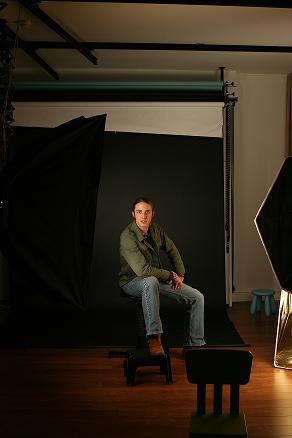
Working in a primary school
by Jan-Bernd Rösmann
A typical working day
My working day started at 7:30 a.m. Until 7:50 a.m. I sat in the staff room and talked with the form teacher of the class I stayed in about what the lessons would deal with that day.
Then I went to the classroom and waited for the first lesson to start. The first step was to talk about what the children had done at the weekend, which took nearly half of the lesson. They all sat in a circle and one by one narrated. After that, they had to make a diary entry about what they had just told and then the bell rang for the first time.
The second lesson was a maths-lesson in which the children worked on two pages in their maths-book. I had to walk through the classroom and help children who had problems, which was quite stressful because some didn’t understand my explanations as fast as I had expected…
At 9:30 a.m. the bell rang for the second time, which meant the “great break” had started.
I had been arranged for playground duty and so I stood about on the playground, which was quite displeasing that day because it rained all the time.
At 9:50 a.m. the bell heralded the end of the “great break” and the beginning of the “breakfast-break”, which lasts 10 minutes and in which the children stay in class and have the opportunity to buy cacao and vanilla milk at the caretaker’s or just to eat or drink what they brought on their own.
The third lesson was a German lesson. The children worked on different topics like “Invention of the bicycle” or “Indians” and created placards for this, which they presented the next day. I assisted them with that.
Last but not least the fourth lesson was a music lesson. Many different songs were sung and the teacher explained, when and on what terms the texts of those songs were created.
After that lesson my working day was over and I went home.
Advantages and disadvantages
I can imagine working as a teacher quite well because I like jobs in which you work with people and not just sit in your office in front of a computer or something like that. I think that being a teacher is one of the most important jobs because school gives children the fundament for living in our community and children are our future. If the pupils are dedicated and interested in what you teach, teaching is a really joyful job, but unfortunately there are always some pupils who “boycott” your lessons and who do not show any commitment, which can be quite frustrating and can be followed by resignation on the part of the teacher.
Anyway, it’s frustrating to see, how many children can nearly be called “bedraggled” because they live in a “TV-world”. They do nothing but watching TV and playing computer the whole day and have never experienced the significance of learning and education.
Nevertheless: All in all I can say that being a teacher might be something for my future career because you can take much pleasure in good pupils who are grateful that they can learn something from you.
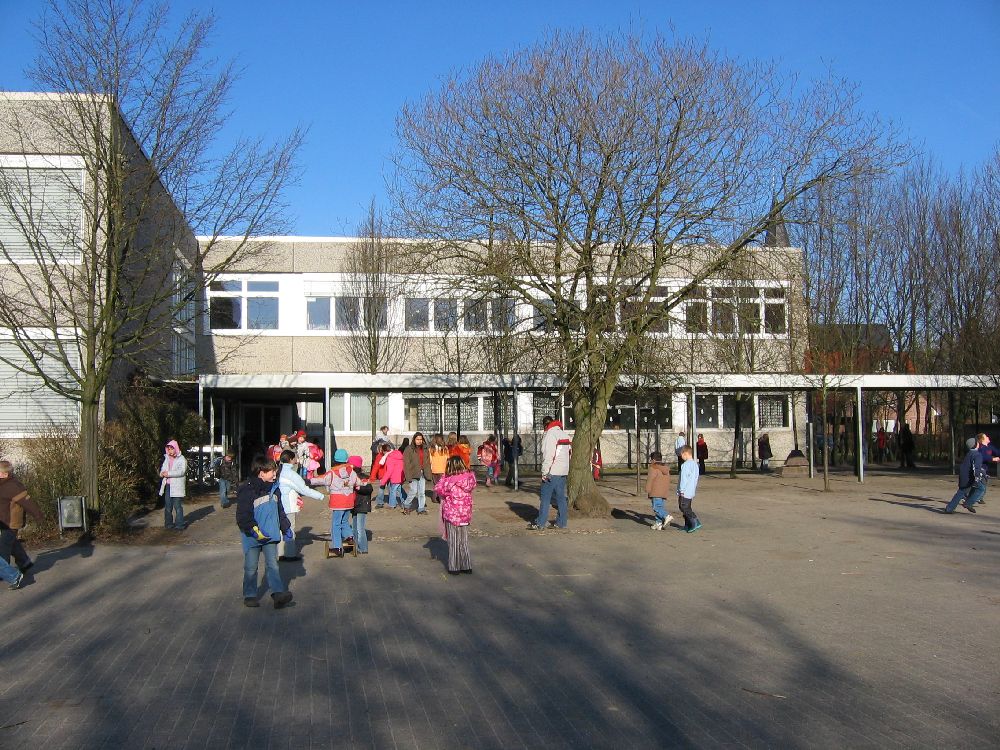
Working in a lawyer´s office
by Nina Schmiemann
A typical working day
I spent my practical work placement in a lawyer´s office. Its name is “Breidbach & Ammertmann“. Mr Breidbach and Mrs. Ammertmann are married, he is specialised in working law, contract law and traffic law. She is an expert for family law and her special fields of work are divorce law, maintenance law and custody matters. They have one clerk and two apprentices, the training on the job takes three years and then they are articled clerks.I had a lot of fun there and I did so many different tasks at that time, but at the beginning the lawyer explained that I had to give the pledge of secrecy, I was not allowed to tell anything about clients. I think my days were all different and so I would like to point out the tasks which I did mostly. I had to copy letters, notes for the files etc and write new deadlines in the files and put them into the filing cabinet. Nearly every morning I searched the files for some deadlines and gave them to the lawyers. Moreover I was allowed to read some files. It was really interesting. Furthermore I did errands, filed away some briefs or took old files in the file cellar. I did some little further tasks and typed sth. on the computer. Mrs. Ammertmann gave me cassettes with dictations and I had to do this. I wrote letters, notes for the files and so on. I had to fax and I went to the county court and the district court and delivered courtpost. One day I was with Mr. Breidbach in a hearing in court in “Gronau“ and in a hearing in “Osnabrück“. In “Gronau“ his client didn´t want to pay an account, because the product was claimed to be unsatisfactory. In ”Osnabrück” there was a hearing about a traffic accident. On three days I was with Mrs. Ammertmann at domestic relations court, especially to witness divorce and maintenance proceedings, and one custody proceeding. This was really interesting and exciting. I enjoyed the time and I made lots of nice experiences.
Advantages and disadvantages
As I see it this job as a lawyer has some disadvantages, but also some advantages. I would like to begin with the disadvantages. Mr. Breidbach told me he had to drive 50 000 km every year. I think this can be very funny first, but later, I think, it could be really boring to drive so many kilometres nearly every day. Moreover lawyers have to work at the weekend, because they have so many clients and the time in the week isn´t enough. Another aspect is the time you lose for waiting, driving etc ... To sum up the negative facts, I would say this job is extremely stressful and strenuous. On the other hand there are some advantages. Firstly it can be positive that a lawyer is able to organize his working hours. Mostly lawyers are independent and so they are ”their own bosses”. Besides this, the job is absolutely interesting and full of changes, you meet new and other people and you have to work with people. Lawyers see a lot of different towns and cities, because they have to go to many different courthouses. The last fact which I would like to point out is that you can help people and win cases for them. As I see it, it may be sth. for my future career, because in my practical work placement I learned a lot about the job as a lawyer and I think it´s really interesting. I don´t like the fact that I have to study law though, but I think this job is absolutely interesting. Moreover I like discussing and in this occupation you have to do exactly that in every hearing.
